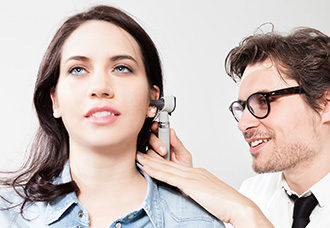The first step in understanding your hearing is to take an audiogram hearing test. This is a hearing test that measures how well you hear at various pitches. It checks for any type of dysfunction in the ear, including noises and deafness in specific frequencies (notes). Although it doesn’t hurt, the whole process takes only about 20 minutes, and afterwards, you’ll find out what range of sounds you can actually hear — and if something is going wrong with your ears.
An audiology test will also help to identify any health problems with your eardrums or middle ear that might be causing temporary or permanent effects on hearing. If you’ve been feeling deaf in a specific range of sounds, an audiogram will show you whether there’s something wrong with your inner ear, or if it’s something else entirely.
One thing to remember is that an audiogram is not part of the routine hearing test that school-age children take. School-aged children usually have an auditory brainstem response (ABR) audiogram instead of a pure-tone audiogram — this type of test is designed specifically for young kids who are learning to listen. Children who have fallen behind, those who’ve just begun speaking another language, and people with changing work needs may benefit from taking an audiogram test as well.
The audiogram hearing test is conducted in a quiet room by an audiologist or other hearing specialist. You sit in a comfortable chair wearing your best earphones, and the audiologist will play certain sound frequencies to find which sounds you can hear. An audiologist can tell you the average range for adults of your age, but a person’s range can vary greatly depending on factors like your ears’ sensitivity and how well you wear your ear protection (if necessary).
Audiograms are good for anyone over the age of 18, whether they’re hearing-impaired or not.

